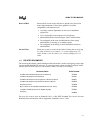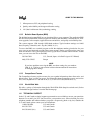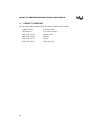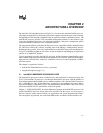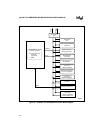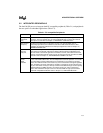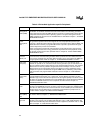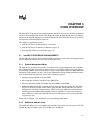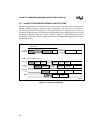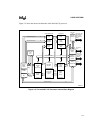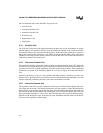
2-3
ARCHITECTURAL OVERVIEW
2.2 INTEGRATED PERIPHERALS
The Intel386 EX processor integrates both PC-compatible peripherals (Table 2-1) and peripherals
that are specific to embedded applications (Table 2-2).
Table 2-1. PC-compatible Peripherals
Name Description
Interrupt
Control Unit
(ICU)
Consists of two 82C59A programmable interrupt controllers (PICs) configured as master
and slave. You may cascade up to six external 82C59A PICs to expand the external
interrupt lines to 52. Refer to Chapter 9, “INTERRUPT CONTROL UNIT.”
Timer/counter
Unit (TCU)
Provides three independent 16-bit down counters. The programmable TCU is
functionally equivalent to three 82C54 counter/timers with enhancements to allow
remapping of peripheral addresses and interrupt assignments. Refer to Chapter 10,
“TIMER/COUNTER UNIT.”
Asynchronous
Serial I/O
(SIO) Unit
Features two independent universal asynchronous receiver and transmitter (UART)
units which are functionally equivalent to National Semiconductor’s NS16450. Each
channel contains a baud-rate generator, transmitter, receiver, and modem control unit.
Receive and transmit interrupt signals can be connected to the ICU controller and DMA
controller. Refer to Chapter 11, “ASYNCHRONOUS SERIAL I/O UNIT.”
Direct Memory
Access
(DMA)
Controller
Transfers internal or external data between any combination of memory and I/O devices
for the entire 26-bit address bus. The two independent channels operate in 16- or 8-bit
bus mode. Buffer chaining allows data to be transferred into noncontiguous memory
buffers. The DMA channels can be tied to any of the serial devices to support high data
rates, minimizing processor interruptions. Provides a special two-cycle mode that uses
only one channel for memory-to-memory transfers. Bus arbitration logic resolves priority
conflicts between the DMA channels, the refresh control unit, and an external bus
master. SIO and SSIO interrupts can be connected to DMA for high-speed transfers.
Backward compatible with 8237A. Refer to Chapter 12, “DMA CONTROLLER.”



